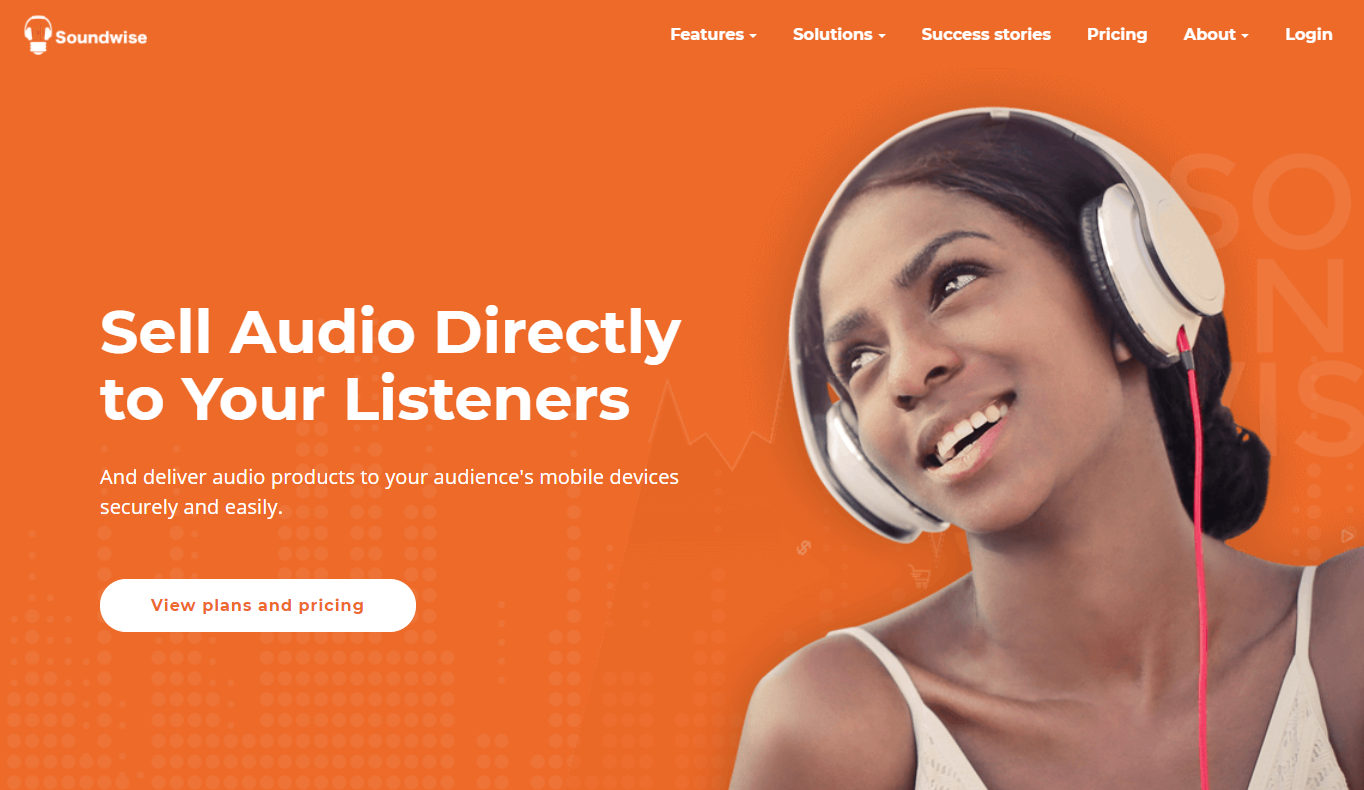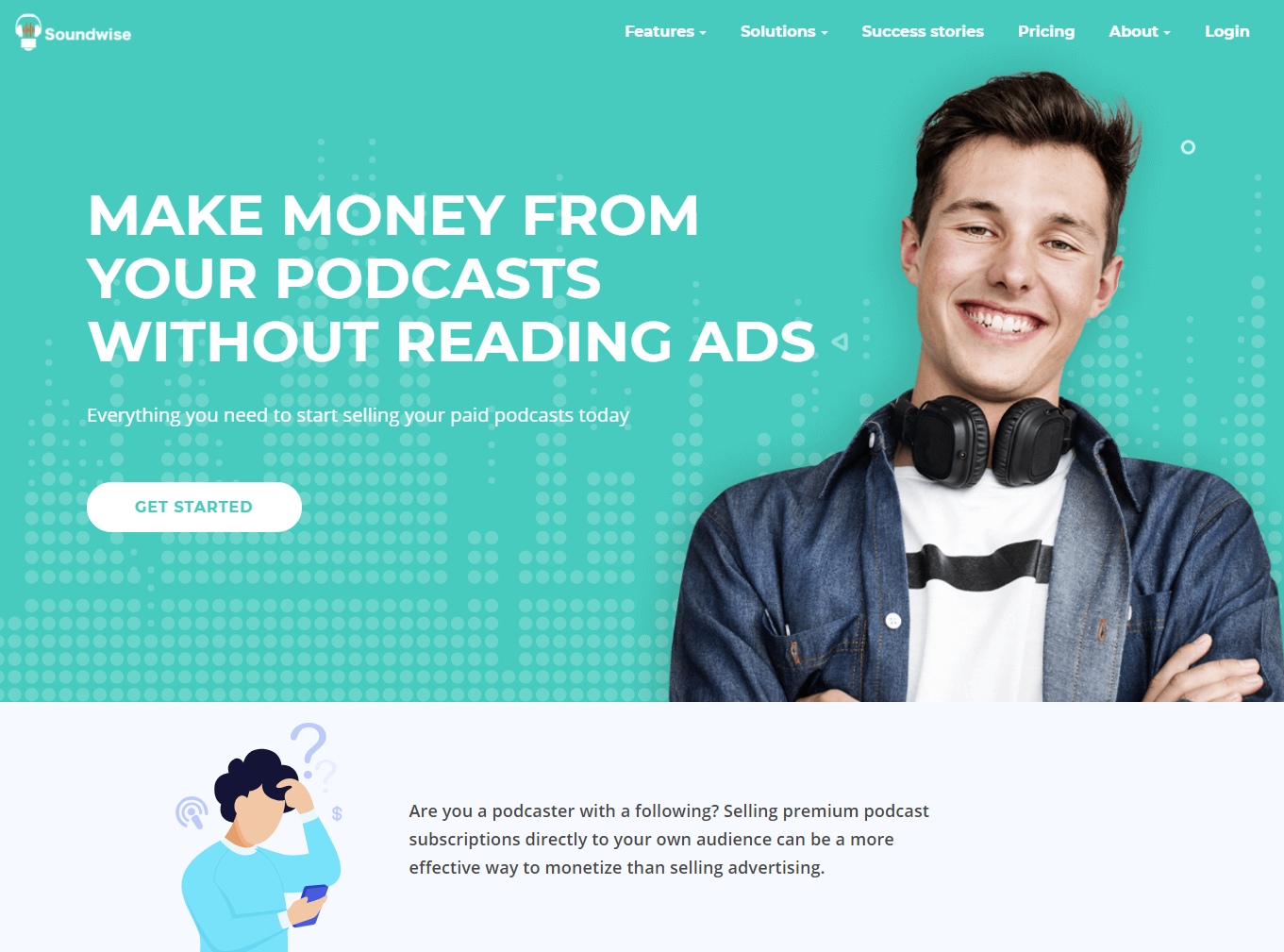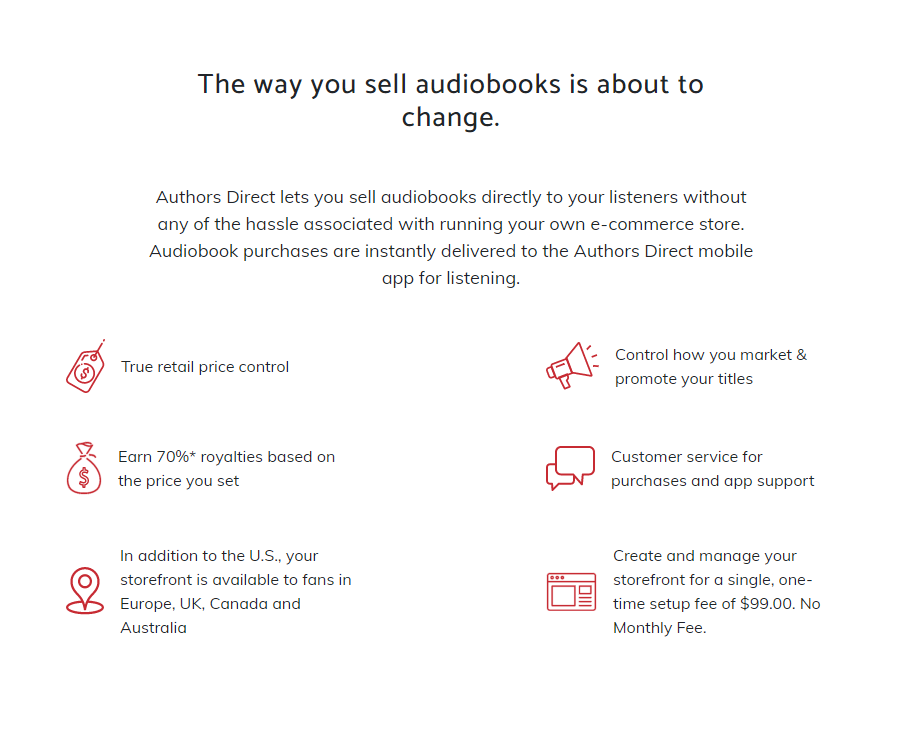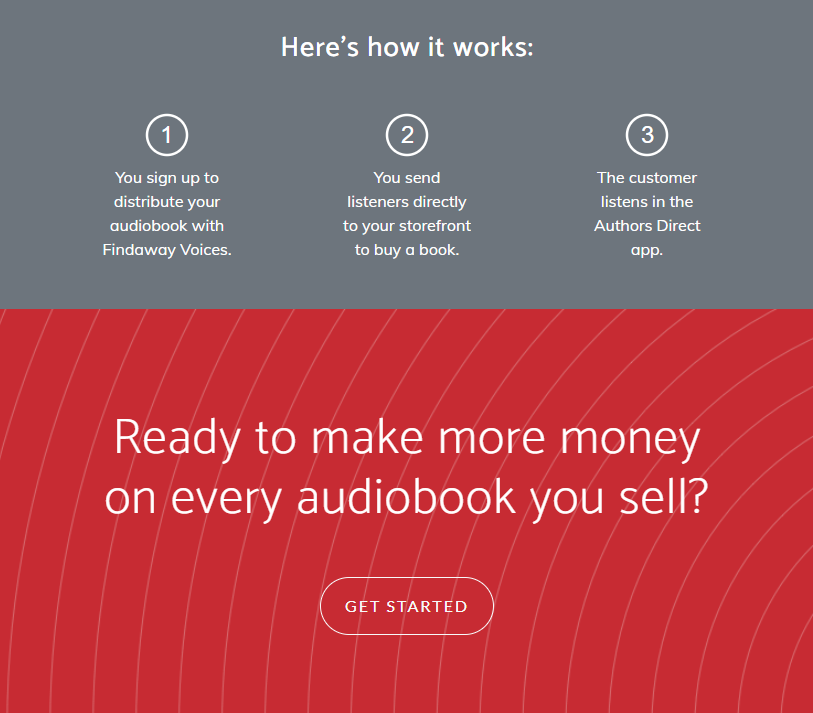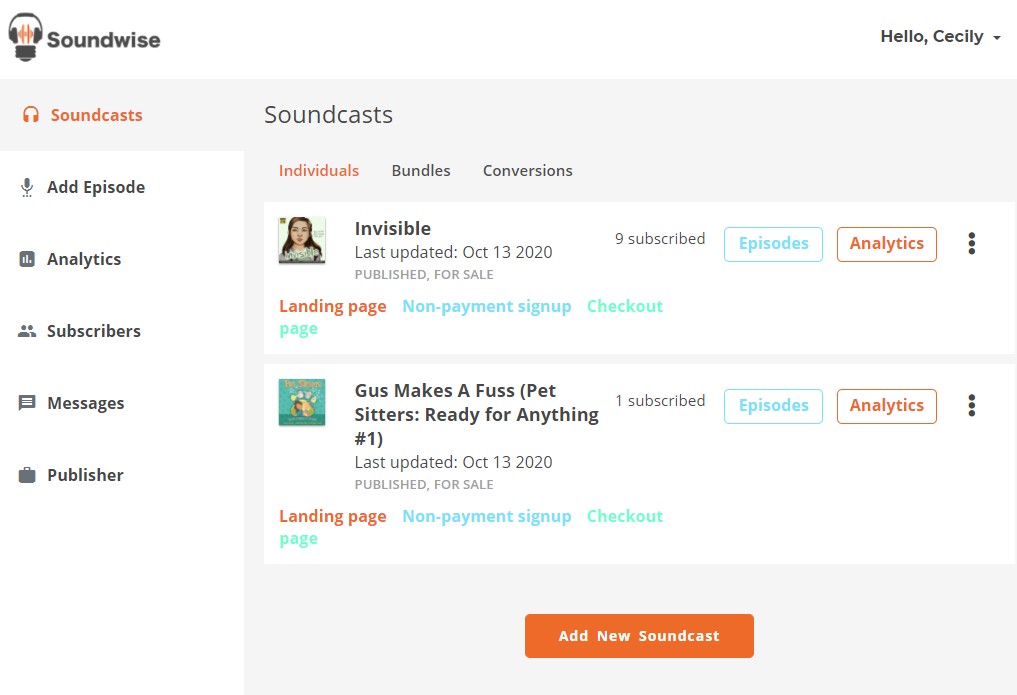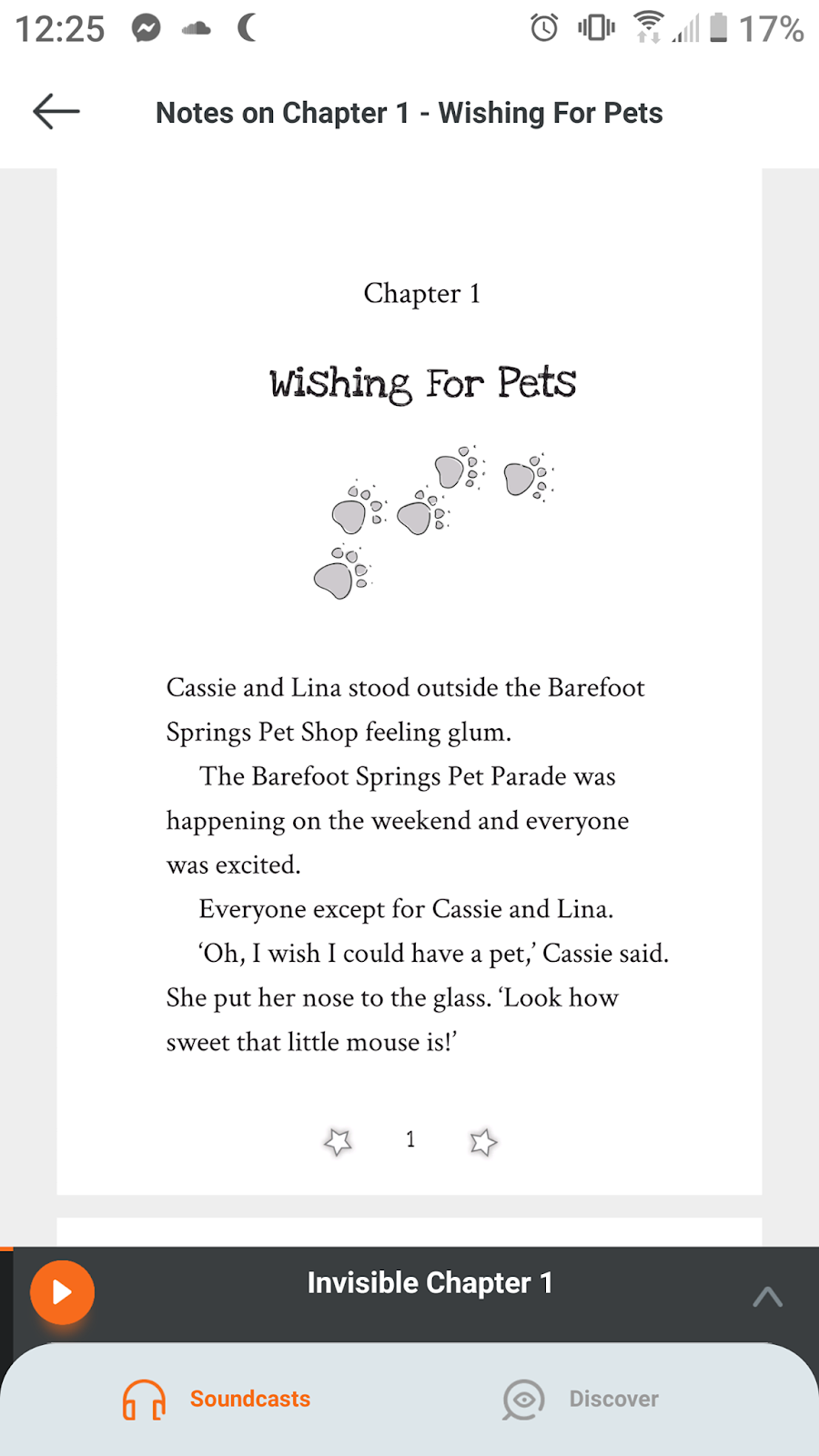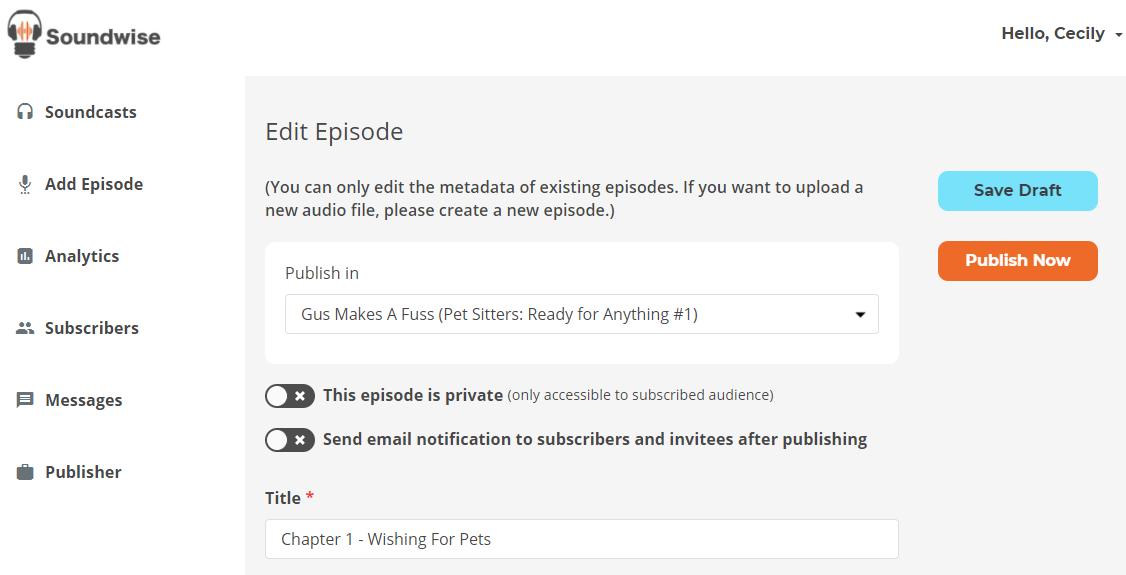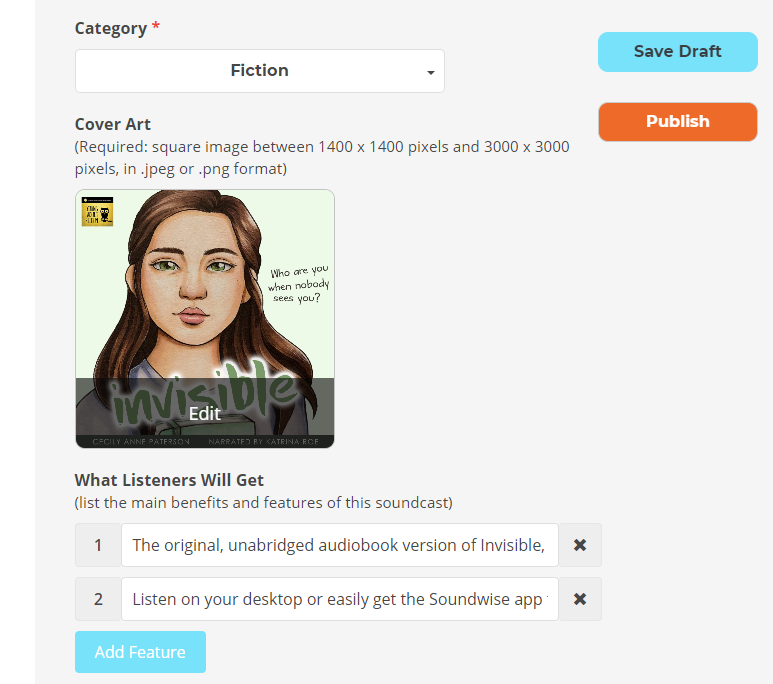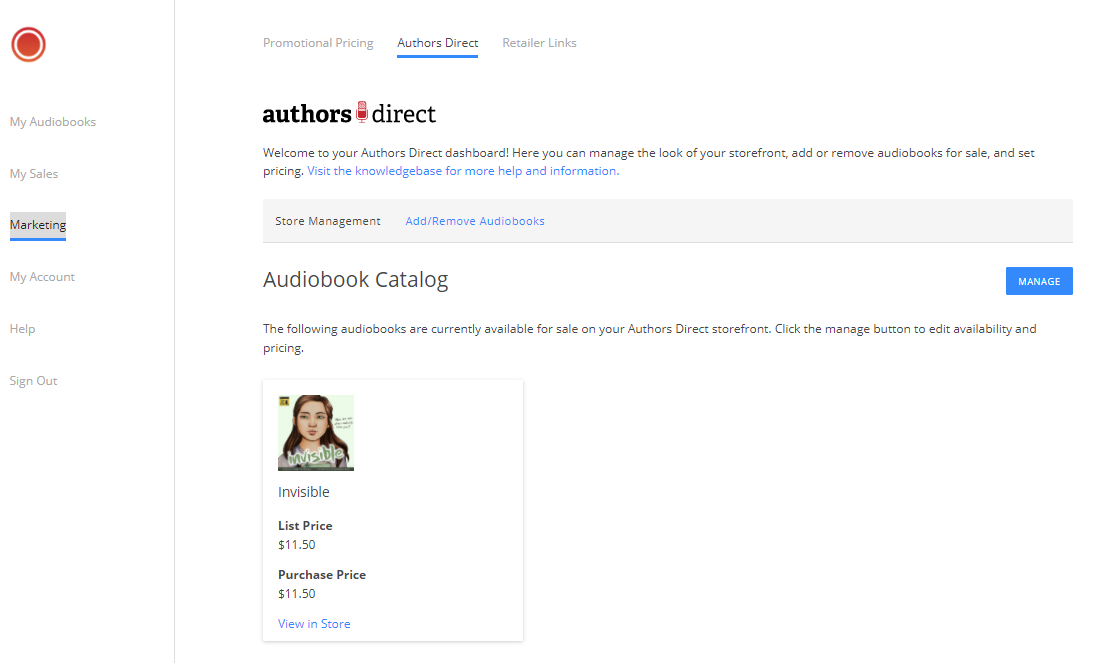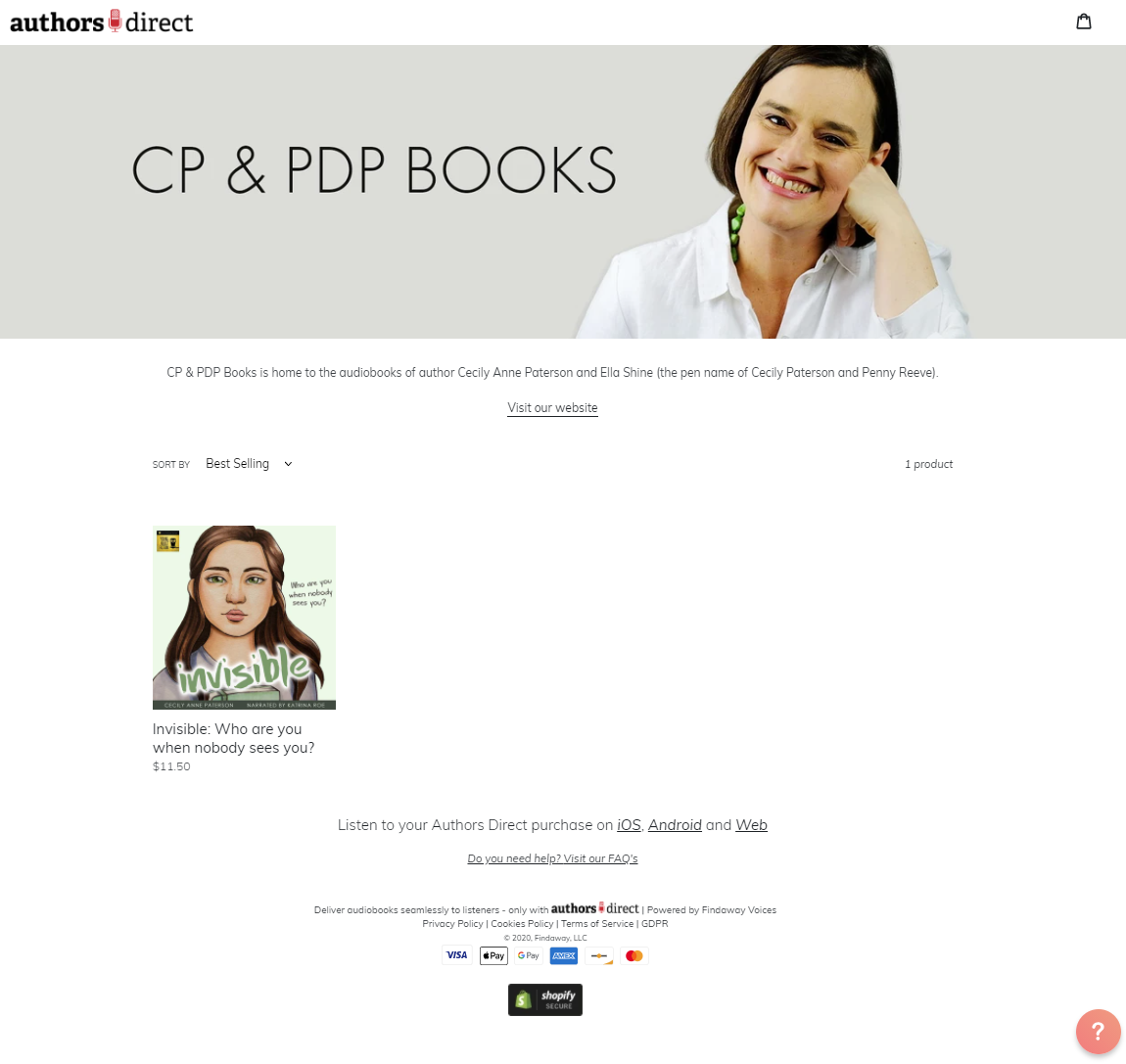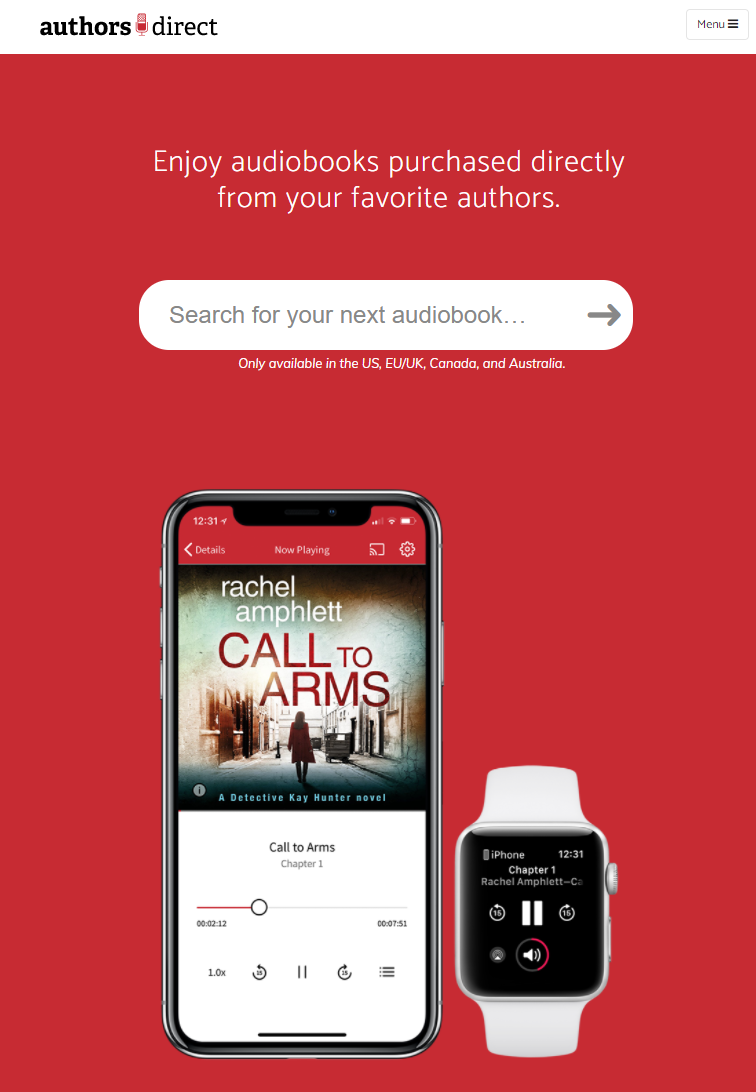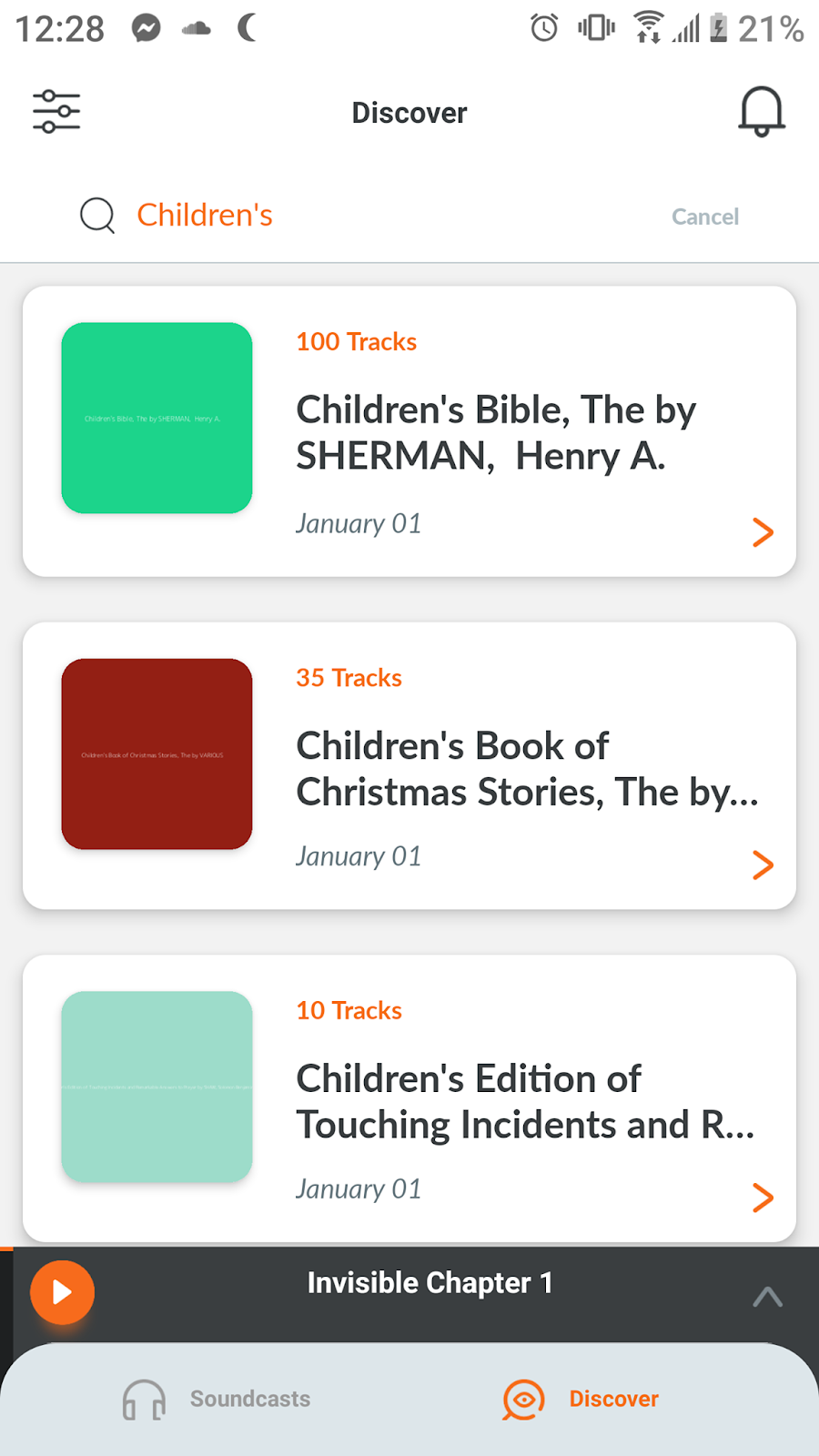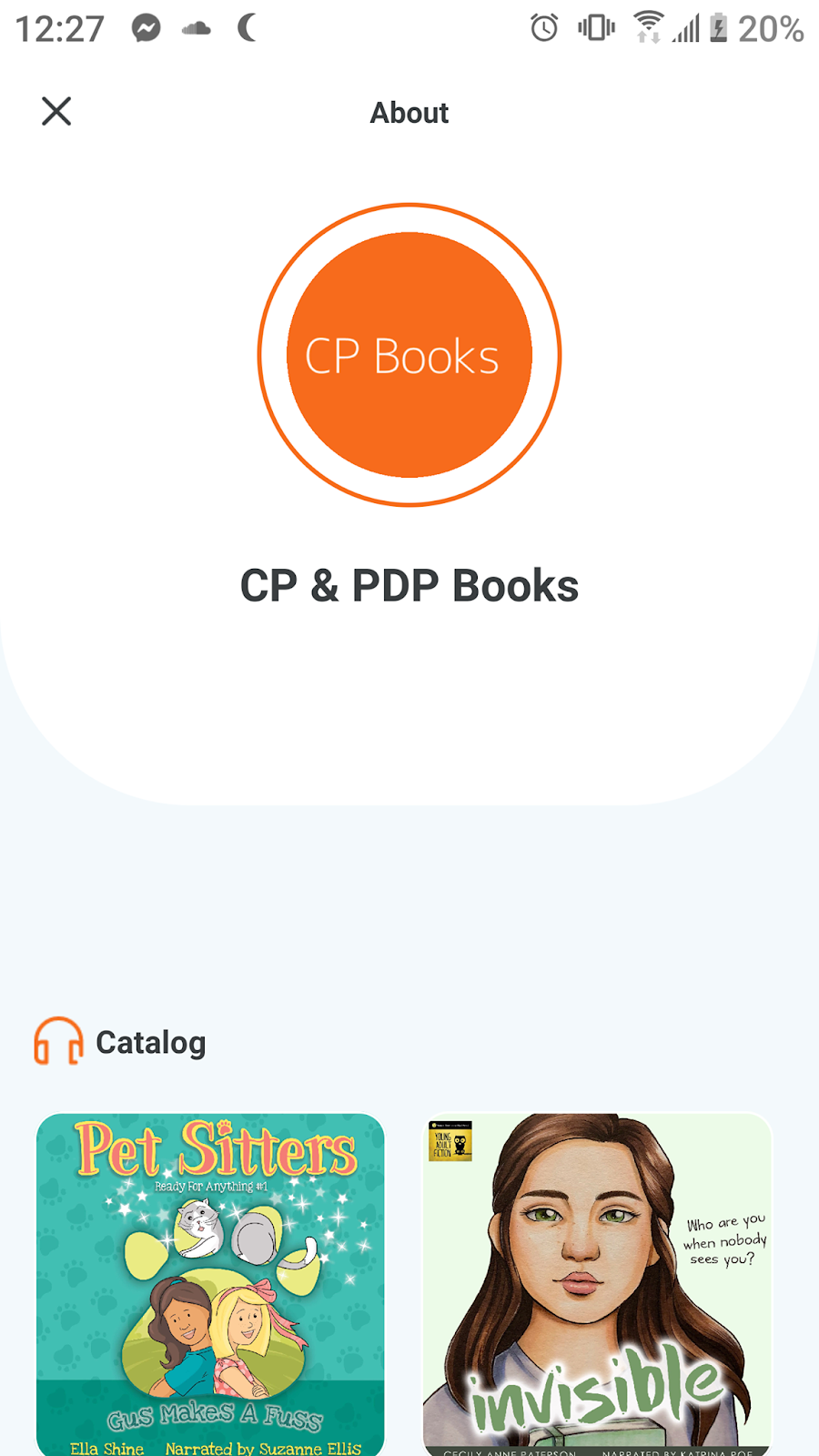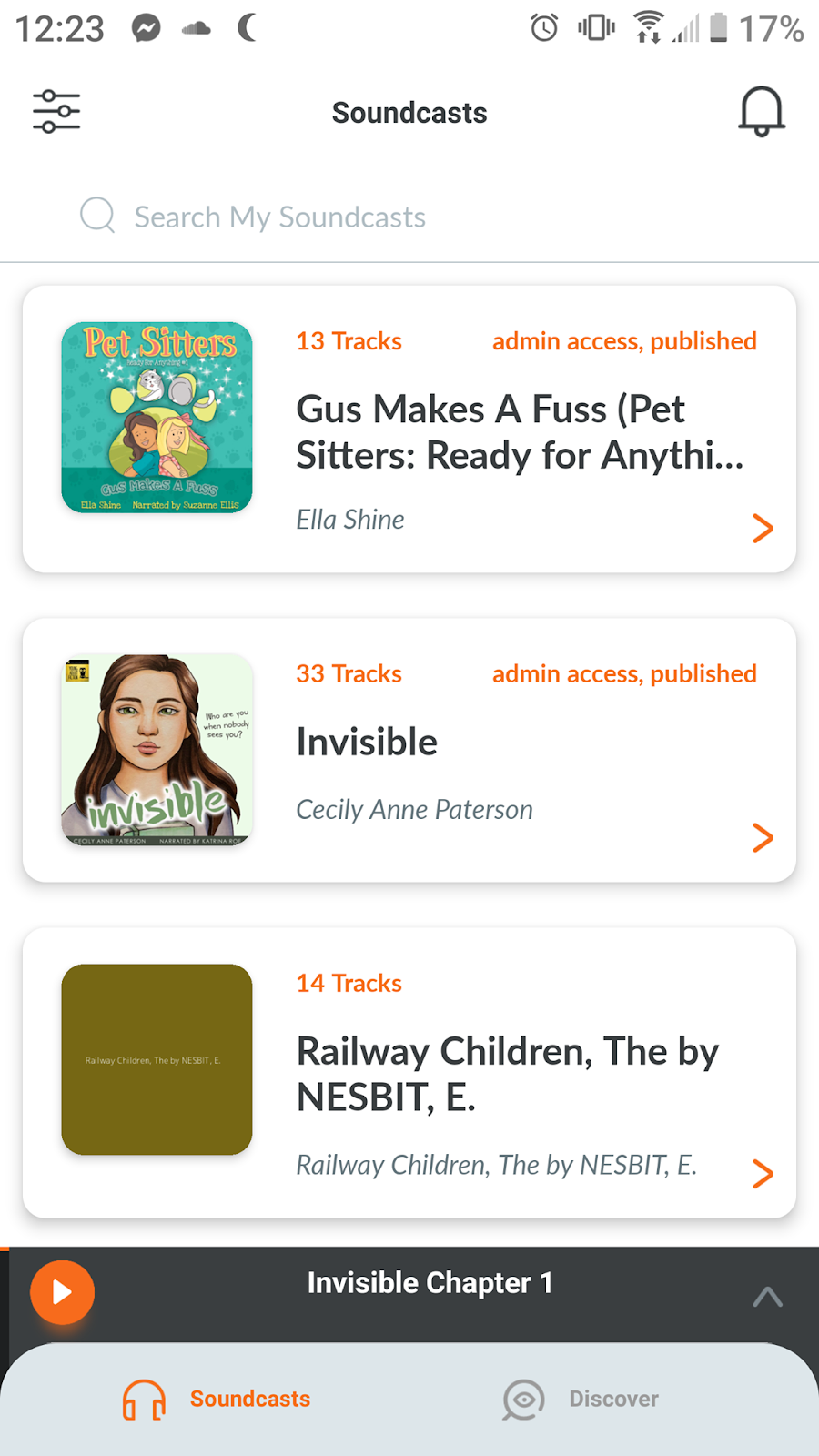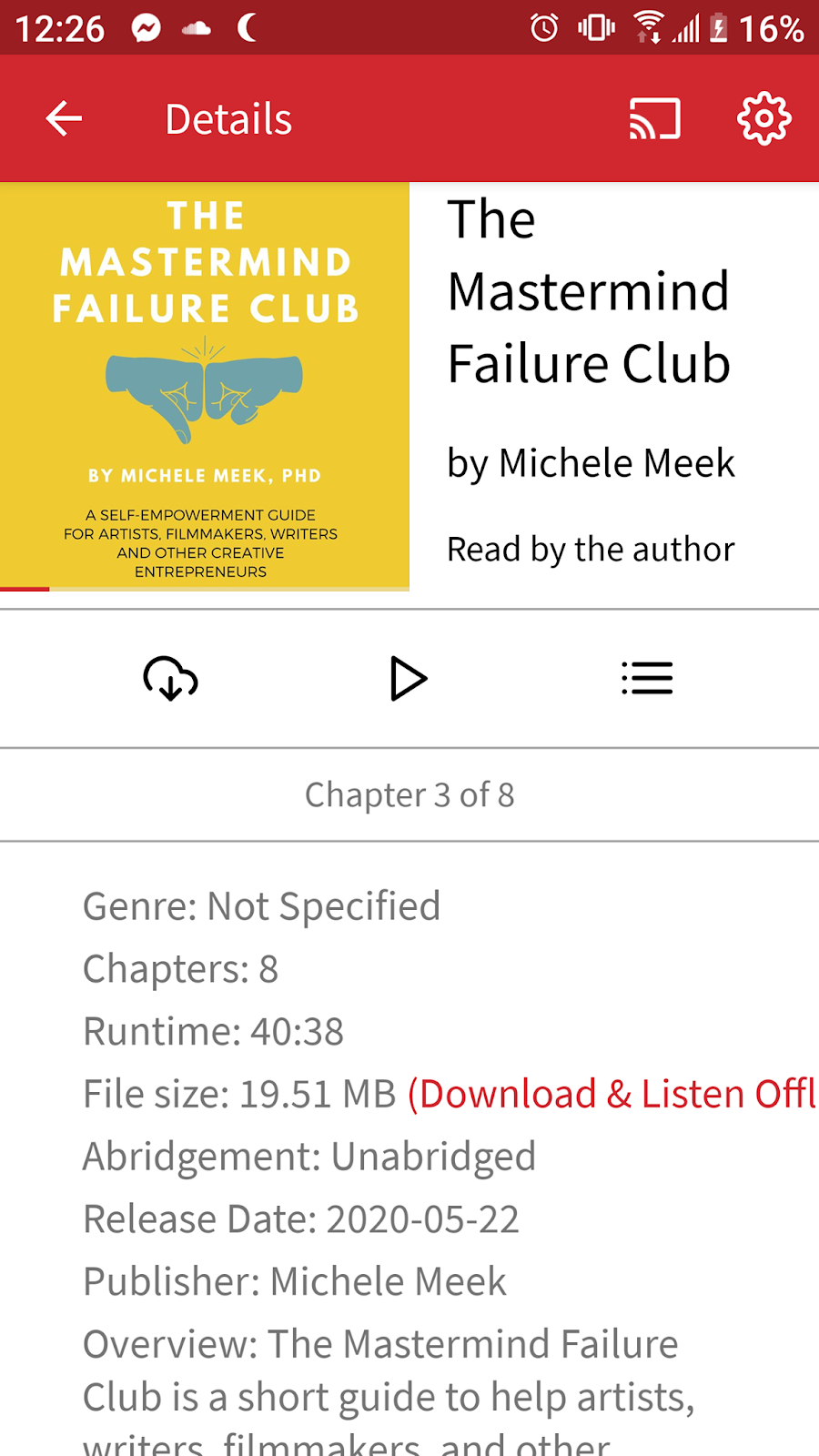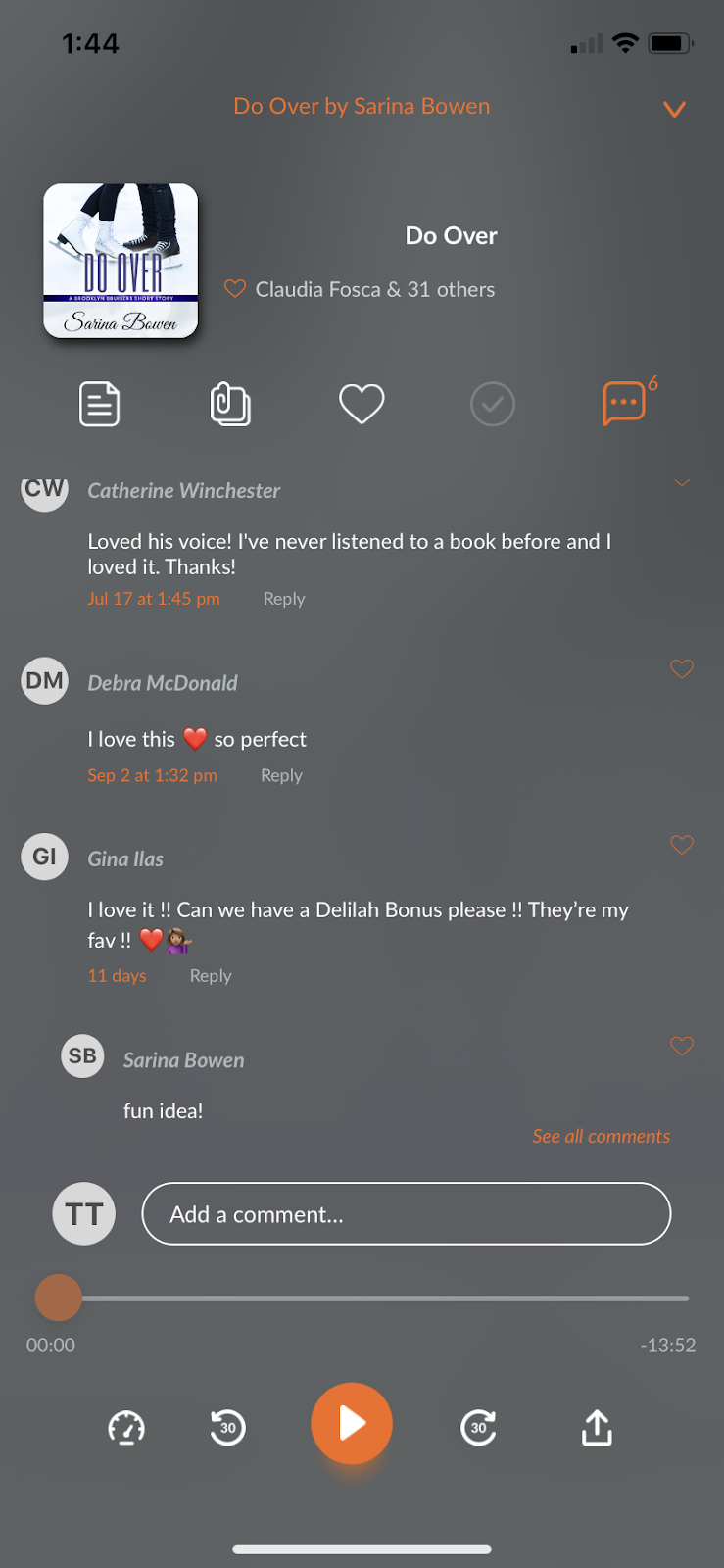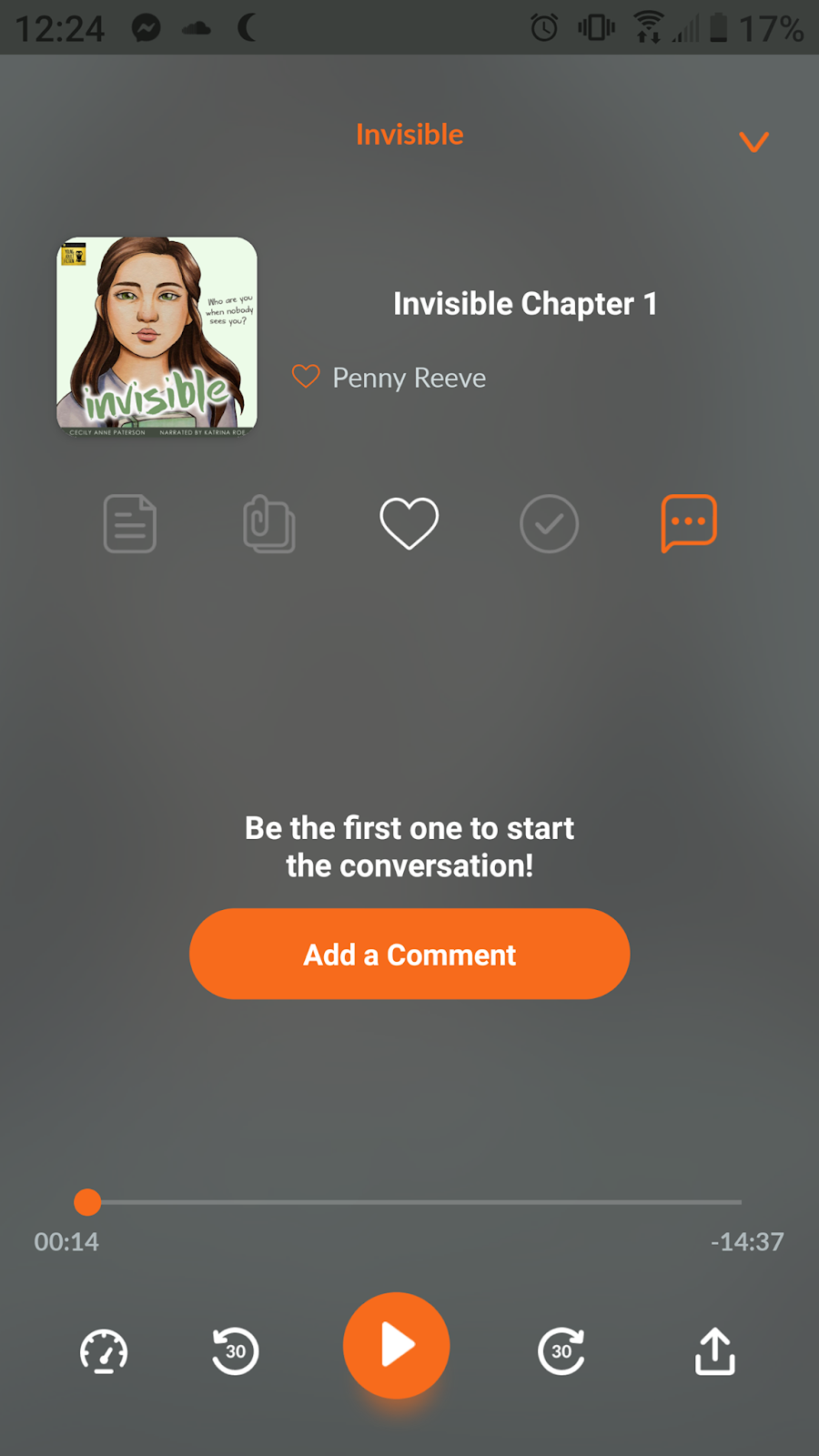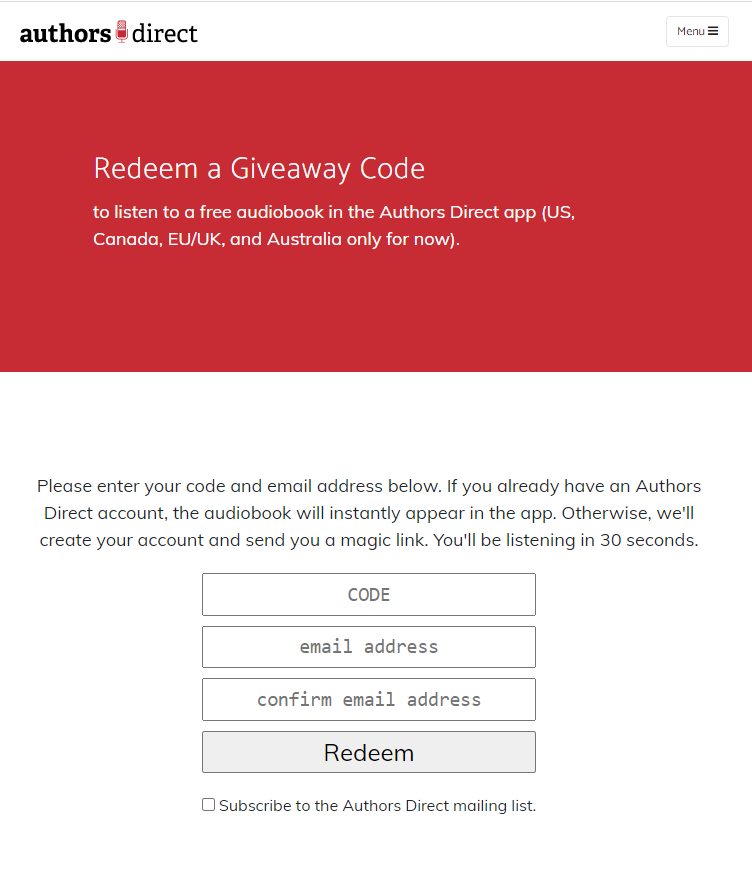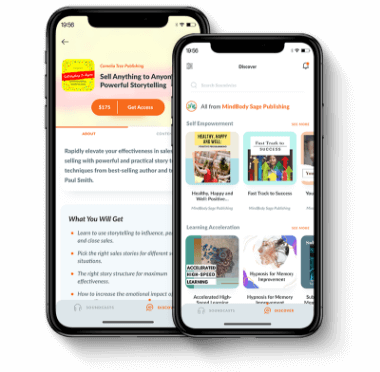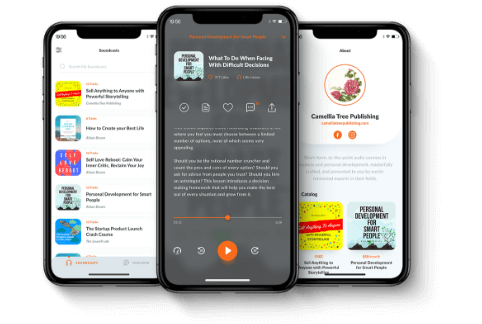I’m an Australian author with over a dozen children’s, middle grade and YA books to my name, both traditionally and indie published.
When I recently had my most popular indie novel recorded as an audiobook, I chose Findaway Voices as the distributor as it’s probably still the best option for Australian authors to get onto most audiobook platforms (we don’t have direct access to ACX).
I uploaded it, set the price, and pressed ‘publish’.
For many indie audiobook authors, that might be the end of the story. But I wanted something a bit more than that.
Like most people, I put my e-books up for sale on the big retail platforms, but I’m not a huge fan of the business model and I’m wary of relying on the big players. I’ve heard too many stories where authors have been banned from some platforms—sometimes for no fault of their own, and often with no way to get back on. Successful authors who get thrown off the big e-retailers can lose all their income, and there’s no way to get their platform back.
I wanted to do something different and develop an independent platform that I could use to build my own audience, as well as using the big e-retailers.
At the time of publishing my audiobook, I had been working on a marketing and promotional system based around my website, a connected Shopify store, and targeted emails.
Now, I wanted to add my audiobook to the mix.
Decision 1: Sell the audiobook from my own webstore.
I decided to sell my audiobook directly from my own web store, next to my other products, using the same shopping cart. I did not want to send customers to a different web page to purchase my audiobooks. I wanted to keep them focused on my books without being tempted to wander off and look for something else.
Decision 2: Deliver the audiobook safely and simply to my customer.
It’s easy to sell something on Shopify. You simply write a description, set a price and entice people to click on the ‘Buy Now’ button. The real issue is, how do you deliver?
I had delivered e-book products to readers without too much hassle, but I had never delivered audiobook products. How could I get audiobook files to my customers in a super simple way while keeping the book in a recognizable and easy to use format?
A few days of internet research led me to two platforms that did at least some of what I wanted.
Soundwise
The Soundwise platform promises to ‘Sell audio directly to your listeners and deliver audio products to your audience’s mobile devices securely and easily.’
This sounded good, so I quickly checked the pricing. The cheapest tier was a very reasonable US$10 per month (paid annually.) A transaction fee of only 10% on this lowest tier, and no transaction fee at all on the higher tiers was very attractive. I’d get 90 to 100% of the sales of my audiobook back into my pocket.
Looking further, I realized that you can use Soundwise not just for audiobooks, but also podcasts, audio courses and the like.
Now that’s interesting. I don’t have a podcast, but plenty of other authors rely on podcasts as a marketing tool, or include their podcast as part of their content for sale. Some authors make sample chapters of their audiobooks into podcasts as they are findable on podcast aggregators such as Spotify, iTunes and the like. Having the ability to publish your podcast from the same dashboard you sell your audiobooks, at no extra cost, could be very convenient.
Importantly for me, however, Soundwise promised ‘frictionless audio content delivery’. This was what I was looking for, so I signed up to look.
Authors Direct
At the same time, I discovered a platform connected to Findaway Voices called Authors Direct. Its byline, ‘Enjoy audiobooks purchased directly from your favorite authors,’ connected with my desire to sell directly to my readers, and its relationship to the well established Findaway Voices, which I had already used, sounded promising.
The emphasis on audiobooks made it clear that Authors Direct offered no option for podcasts, or indeed, any other audio products, except books.
Authors Direct pricing was a bit steep, I felt, at US$99, although to be fair, it was only a one-time fee.
Authors Direct said that I would get 70% of the purchase price of my audiobook, which is a great deal in comparison to what authors would normally get from audiobook sales on the big platforms, but not as good as Soundwise’s percentage.
The site promised me I would have the ability to sell audiobooks in the United Kingdom and Europe as well as on the new ‘Authors Direct dashboard’. This struck me as being an unusual thing to emphasize. I had never thought that I couldn’t sell in those areas, and if I used Soundwise, there was no limit on geographical areas in which to sell.
Authors Direct promised me a ‘store front’ and direct sales, and even though the words ‘audiobook delivery’ didn’t come up, I thought there might be some way to make that happen, so I decided to try it.
Setting up an audiobook
Soundwise
Setting up my audiobook was easy enough. I created an account, clicked on ‘Add New Soundcast’ and followed the clear instructions.
I really liked that I could set the currency to Australian dollars. (This was not possible with Authors Direct.)
The word ‘soundcast’ was used throughout the process. I never heard of the word before, but soon realized that a ‘soundcast’ was basically any audio product. It could be an audiobook, a podcast, etc. I wondered if the word might add friction to the process. If a customer has purchased an ‘audiobook’ would they be confused later about putting a ‘soundcast’ on their device? Thank goodness the word ‘soundcast’ does not show up on the interface of the listener side.
A special feature was the ability to include PDF ‘notes’ to accompany each audio chapter if I wanted. This opens up heaps of interesting opportunities for authors. When I set up a junior reader audiobook later, I included a PDF of the illustrations with the first chapter. I could also have included ‘cover art’ for each chapter.
The interface was easy, clean and tidy. I also liked the form that asked me to list features of the audiobook, which display nicely on the product page.
Opening the audiobook on the app allows you to access these notes easily on your device, so my young listeners can read along with the audio or look at the pictures while they listen. Non-fiction authors could include diagrams, charts and illustrations. Fiction writers could add value with, well, anything really!
Soundwise offers an option to keep the soundcast (and within the soundcast, each chapter) ‘private’ or make it public. I didn’t understand this at first, set everything to ‘public’ and received a very polite email from Soundwise the next day asking was I sure I meant to do that?
I was grateful for the heads up, and taking a further look, I realized that this was a powerful feature. An author can use the ‘private’ soundcast feature to send the book to reviewers before actually publishing it for sale. They could set certain chapters to ‘public’ as samples for customers to listen to before purchasing. Since each audio track has its own web page, authors can link to their ‘public’ tracks in emails and social media for lead generation.
Authors Direct
I discovered that my new Authors Direct account connected closely in look and function to my Findaway Voices account (previously set up when I was publishing my audiobook to the e-retail platforms). In fact, the way to access your Authors Direct account is through the ‘Marketing’ option in your Findaway Voices account.
Because of this close connection, it was a simple matter to pull my already published audiobook over from Findaway Voices and put it straight into Authors Direct. This meant that I only had to set up the files and metadata once.
(Having said that, preparing and publishing an audiobook in Findaway Voices is quite a process. Because the platform is geared towards publishing audiobooks specifically, you have to include things like BISAC codes and ISBN numbers. Of course, I had all these as an author, but it was a lengthier, more cumbersome process than setting a book up with Soundwise.)
In both audiobooks I’ve published through Findaway Voices, after pulling an audio file into the interface, I received this error message: 0: Bitrate must be at least 192000 and we detected 128 kbps. Both times I had to go back to my tech-help people and get them to fix it. (Apparently, it’s an issue in the exporting to MP3.) It was fixable, but it was annoying and time consuming.
Soundwise Landing Pages vs Authors Direct Storefront
When my audiobooks were set up, it was time to look at the options for sales.
Authors Direct invited me to ‘create a storefront’. I uploaded a custom-made banner and my logo and added a link to my website. The store shows all my audiobooks that are listed on Authors Direct with prices (in US dollars, unfortunately, with no option to change) and buy buttons.
It’s not good for me, the author, however. If I’ve worked hard to get that customer interested in the book, and directed them to the purchase page, I want to make a sale. I don’t want my customer to get distracted by someone else’s audiobook.
I would far prefer to send my prepped customer to my Soundwise store where they can be convinced about my audiobook and decide to purchase without distraction.
Within the Soundwise mobile app is a ‘discover’ function which allows a customer to search for other audiobooks, but by the time a customer discovers this, hopefully they’ll be enjoying your audiobooks so much, that they’ll see the rest of your content that’s automatically presented on the app and immediately choose to purchase more.
Soundwise itself says, ‘Anybody who has the Soundwise app installed can search and find your soundcasts on the app. However, we do not proactively present other publishers’ content to your listeners, and vice versa. We aim to provide an exclusive environment for your listener community, and allow your listeners to enjoy your content with minimum distraction. We do showcase your other soundcasts on the app to the listeners who have already signed up for one or more of your own soundcasts, which help increase the lifetime value per customer for your business.’
(Another point to note is that Authors Direct doesn’t allow refunds because of the electronic nature of the products. Unfortunately, some readers will never purchase if they don’t have the reassurance of having the option of a refund, which means I may lose some customers simply because of Authors Direct’s policies.)
Delivery of audiobooks via Soundwise app and Authors Direct app
Both Soundwise and Authors Direct use a similar delivery method for audiobooks. A customer ‘signs in’ when they purchase their book and is then directed to download the specific app for their phone or device. Once that’s running, they sign in on the app, using the same credentials as before, and the audiobook is there, ready for listening.
Both apps are easy to navigate and similar enough to other audiobook players that there are no major learning curves or hassles to overcome. You press play on your book and enjoy the story.
That’s where it stops with Authors Direct. Within the Soundwise app, however, are some features that might help listeners enjoy the story even more.
The comment function on each audio track can promote listener engagement with the content. It can be fun to see what other readers/listeners think of the content, or what stands out to them. (Of course, this is optional and authors can turn it off, but it might help with engagement and tribe-building if that’s what an author chooses to do.)
Plus as mentioned above in this article, there’s also the option within the audio chapters to look at the accompanying PDF ‘notes’ which could be as simple or as complex as the author wants to make them.
Lead generation and promotion for authors
Every independent author knows the importance of building their email list to create a community of engaged, interested readers who love what we create. It’s the tool that allows an author to be independent! With an email list, we can own our audience, and be independent of the big retailers. We run promotional campaigns where we give stuff away to potential readers in exchange for their email addresses. Many authors give free books or excerpts, but there has not been a good way to give away audiobook content… until now.
Findaway Voices (and through them, Authors Direct) has two ways authors can give their audiobook content away. The first is to set the price of the book to $0.00. This means that every person who discovers the book can purchase it for free. However, you won’t have the benefit of receiving the purchasers’ email addresses for your list, defeating the purpose of a free giveaway.
The second way to give away your audiobook through Authors Direct is to request Giveaway Codes. Each title is entitled to 30 Giveaway Codes in its lifetime (if you’re enrolled in Voices Plus, your book can have 100 Giveaway Codes.) For an author hoping to gain hundreds or thousands of leads in a campaign, however, 30 codes is not nearly enough.
Soundwise offers a number of features that support lead generation. First, every person who signs up to access or purchase a book leaves their email address, which the author has access to.
Second, there are options to set multiple prices for your audiobook on the Pro and Platinum tiers. Authors can easily set up a free pricing option for their book, and then send leads to a landing page to simply collect it.
Authors signed up for the PLUS tier have options too: the unlimited promotional codes would allow them to send subscribers a code for a 100% discount. (Those on the STARTER tier would need to set their book to completely free.)
These options also make it easy for authors to send review copies and any discounts they’d like to offer their list.
The fact that authors can publish free, but gated, audiobooks on Soundwise and we have the email of everyone who signs up means we can use this feature to build an audience, and then sell paid audiobooks all in the one place.
Integration with the Author’s own website
My intention was always to sell my audio on my own webstore, along with my other products, like e-books and print books. I wanted all my products together in one place, so they could be purchased in the same shopping cart. I did not want to send my customers off to a separate location to purchase audiobooks: I didn’t know if they’d come back, and I didn’t want them to get distracted.
For me, the sales capabilities of Authors Direct and Soundwise were therefore irrelevant. Even though I was annoyed by the lack of currency choice apart from US dollars within Authors Direct, it wasn’t an ultimate hindrance in itself, because I had already set up a store on my own website.
It was the delivery capabilities that were most important, based on which I made my final choice.
Authors Direct would only deliver audiobooks that had been purchased within the Authors Direct store. This was not what I was looking for, and ended up being the deal breaker for me.
Soundwise, on the other hand, has a way to deliver an audiobook without it having been purchased on its platform.
The top three pricing tiers allow me to set up a ‘non-payment signup’ option for my books. With that option, I can give readers a signup link to my audiobook on Soundwise without them paying through Soundwise.
An integration is also available on these tiers with major e-commerce software such as Shopify, through Zapier, which makes things even more convenient.
Soundwise vs Authors Direct: which one to choose?
After all my searching and testing, I chose Soundwise because of its audiobook delivery capability, but I like it for a lot of other reasons. The interface is user friendly, the price is affordable, and there are lots of options around price setting, discounts and coupons that make this indie author feel like she’s in control.
Now, when I sell my audiobook directly to my customers, the procedure works like this:
- Customer purchases an audiobook through my Shopify store.
- An auto responder email is triggered by the specific purchase of the audiobook.
- The email sends the customer a link to the Soundwise ‘Non-payment signup’ page, with instructions.
- Customer goes to the signup page, signs up, gets book, downloads app, signs in.
- Customer adores my audiobook!




